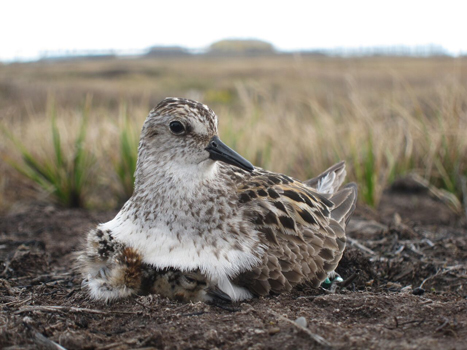The behavioural rhythms of organisms are thought to be under strong selection, influenced by the rhythmicity of the environment. Such behavioural rhythms are well studied in isolated individuals under laboratory conditions, but free-living individuals have to temporally synchronize their activities with those of others, including potential mates, competitors, prey and predators. Individuals can temporally segregate their daily activities (for example, prey avoiding predators, subordinates avoiding dominants) or synchronize their activities (for example, group foraging, communal defence, pairs reproducing or caring for offspring). The behavioural rhythms that emerge from such social synchronization and the underlying evolutionary and ecological drivers that shape them remain poorly understood. Here these rhythms are investigated in the context of biparental care, a particularly sensitive phase of social synchronization where pair members potentially compromise their individual rhythms. Using data from 729 nests of 91populations of 32 biparentally incubating shorebird species, we report remarkable within- and between-species diversity in incubation rhythms. Between species, the length of incubation bouts was unrelated to variables reflecting energetic demands, but species relying on crypsis had longer incubation bouts than those that are readily visible or who actively protect their nest against predators. Results indicate that even under similar environmental conditions, social synchronization can generate far more diverse behavioural rhythms than expected from studies of individuals in captivity. The risk of predation, not the risk of starvation, may be a key factor underlying the diversity in these rhythms. informacion[at]ebd.csic.es: Bulla et al (2016) Unexpected diversity in socially synchronized rhythms of shorebirds. Nature. 2016 Nov 23. doi: 10.1038/nature20563
http://rdcu.be/mUso
Welcome
Welcome to the official website of the Doñana Biological Station (EBD-CSIC)...

The Doñana Biological Station: EBD-CSIC
The Doñana Biological Station is a public Research Institute belonging to the Spanish Council for Scientific Research CSIC in the area of Natural Resources...

Mission
Our fundamental mission is to carry out multidisciplinary research of the highest standard directed to understanding the way in which biodiversity is generated, maintained and deteriorates, as well as the consequences of its loss...

Our methods
We apply many techniques within a multidisciplinary framework, from molecular genetics to remote sensing, and from modelling to physiological and isotopic analyses...

Monitoring the environment
Monitoring biodiversity at the Doñana Natural Space cover a wide range of communities, including both terrestrial and aquatic organisms...

Aims
Our aims include the study of the ecological and evolutionary processes by combining field work, mathematical and statistical models and physiological and genetic analysis...
 News
News
 Las altas temperaturas están provocando que las lagunas y las marismas de Doñana pierdan agua rápidamente
Las altas temperaturas están provocando que las lagunas y las marismas de Doñana pierdan agua rápidamente
 Traffic noise causes lifelong harm to baby birds
Traffic noise causes lifelong harm to baby birds
 Illegal wildlife trade, a serious problem for biodiversity and human health
Illegal wildlife trade, a serious problem for biodiversity and human health
 Urbanization and loss of woody vegetation are changing key traits of arthropod communities
Urbanization and loss of woody vegetation are changing key traits of arthropod communities
The loss of woody areas is linked to a decline in the duration of the activity period, a higher tolerance to drought, and less dispersal capacity in both groups.






